September
2009
![]()
![]() 70th Anniversary of the start of World War 2
70th Anniversary of the start of World War 2
1 Sept 1939 - Nazi Germany
invades Poland.
British Government begins
general mobilisation of British Empire Forces
Britain & France issue
ultimatum demanding withdrawal of German Troops from Poland.
2 Sept 1939 - Italy and
Republic of Ireland declare their neutrality.
Switzerland reaffirms its
neutrality and begins general mobilisation of its population to
defend its borders.
British Parliament
approves conscription of all males aged 18-41 resident in UK.
3 Sept 1939 - 1115 BST -
Britain declares War on Germany.
1500 BST France declares
War with Germany.
SS Athena sunk by U-30
with loss of 115 passengers & crew.
Battle of the Atlantic begins.
4 Sept 1939 - Japan &
US declare their neutrality.
17 Sept 1939 - USSR
invades Poland, as agreed by the Molotov–Ribbentrop Pact.
Aircraft carrier HMS
Courageous torpedoed and sunk by U-29, off the coast of Ireland.
30 Sept 1939 - German
pocket-battleship Admiral Graf Spee sinks its first merchant ship,
the British freighter Clement.
2 Sept 1944 - 51st Highland Division returns to and liberates St Valery-en-Caux.
Gloster Sea Gladiator, 813 Sqn FAA, HMS EAGLE, Mediterranean, July 1940.
Airfix 1/72, built straight from the box, with minor decal changes and hook added.
Airfix first released the Gladiator kit in 1956, and it really shows. The Matchbox issue from the late 1980s is a far better bet, or even the Heller 1970s issue. Nevertheless, I bought this when Airfix re-released it last year, mainly because of the low price, box art and (apparently) excellent transfers, which include all of the famous Malta Sea Gladiators, as well as the colourful 72F Sqn markings of the original Airfix issue.
Well, it could have been an excellent sheet, but sadly Airfix's decal supplier printed these on yellow blotting paper, using translucent inks that curl up and die when they meet with water. Disappointing. I also knew that the kit was old, but even I was shocked to see how crude it is. For example, there is no cockpit and the pilot is simply a stump head.
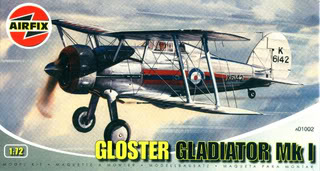
Still, I'm not one to give in, so here it is. Since the Airfix transfers have all fallen apart, I have chosen instead to model Cdr Chris Keighley-Peach's Sea Gladiator from HMS EAGLE in 1940, using a profile from the excellent Osprey book "Royal Navy Aces of WW2".
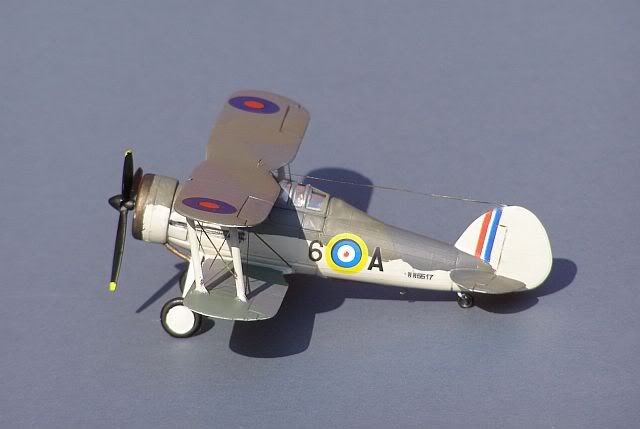
Despite its crudeness, the kit actually goes together very easily, with a reasonable fit. Like all of the other recent 'made in India' Airfix kits that I have built, there has clearly been a serious effort to clean up the moulds as there was negligible flash (except on the propellers) and the moulding looked quite crisp, in a soft light grey plastic that was good to work with.
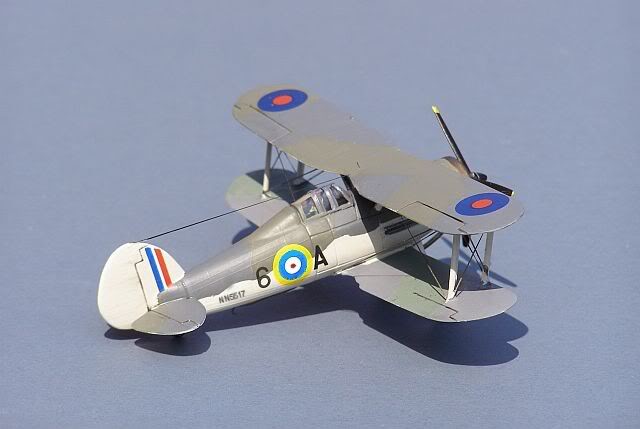
I eventually decided to assemble and rig the wings before painting. Since the interplane struts are all separate, I assembled the cabane struts to the upper wing first and left it to set overnight. I then attached the wings, centre first, placed the wing struts in place and used tape to hold it altogether for 12 hours, Because Airfix have engineered the struts reasonably well with firm attachment points,(for example after struts have slots and forward ones have holes to stop you getting them mixed up), this worked well. In their painting instructions for the Malta Sea Gladiators, Airfix have become slightly confused with the colours of the lower wing shadow shading - they should match the greys and greens of the upper wings.
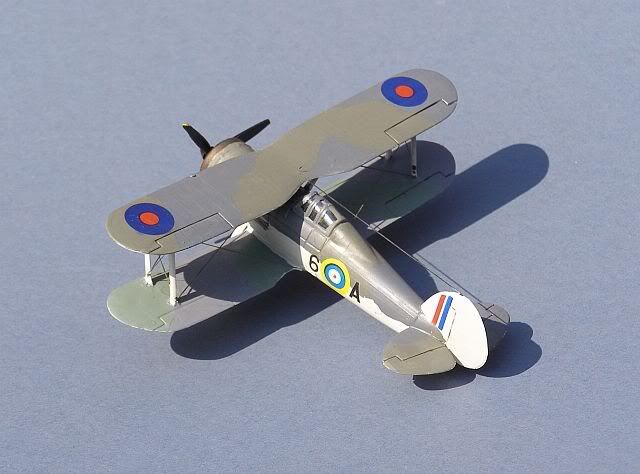
If this were a limited run kit, then I could forgive the crudeness, but even limited run has gone far beyond this standard nowadays, and I cant help but feel that the younger modeller would be seriously disappointed with this kit, especially if he compared it with something like a similarly priced HobbyBoss kit. The decal sheet would probably be the last straw for any young budding modeller!
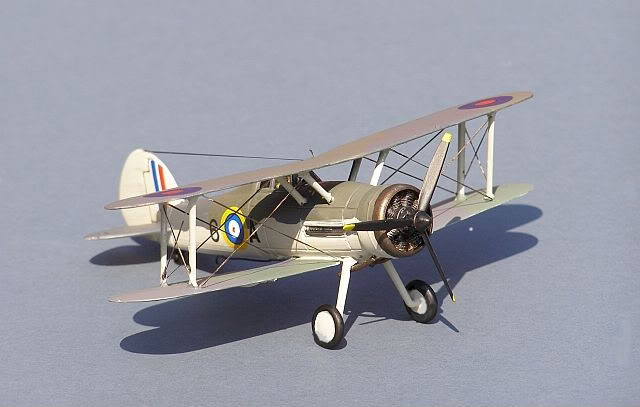
I am personally quite pleased with the end result, but even my 30 year old Matchbox kit is much much better - time to retire this mould Airfix, and for goodness' sake, sort those decals out!
More details of the Sea Gladiator and other Royal Navy aircraft on the RN Props pages
Fairey Fulmar Mk1, 803 Sqn FAA, HMS FORMIDABLE, Mediterranean, 1941.
Vista 1/72, built straight from the box.
This particular kit has sat in my kit stash for the last 12 years, so I felt that I really should get round to building it. Introduced in 1941 to replace the Skua, it was certainly no star performer and not particularly popular, but by an accident of history, the Fairey Fulmar is actually the Fleet Air Arm's highest ever scoring fighter.
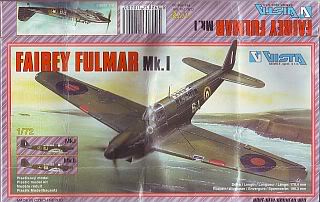
This is the original "Vista" release of the kit. I'm not aware that Vista have actually released any other kits since, which is a shame because this one is really quite good and has subsequently appeared in Revell, SMER and Airfix boxes (all 3 at nearly half the original price!).
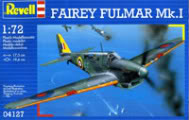
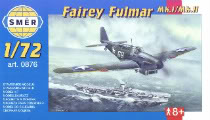
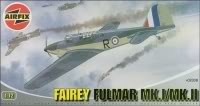
It's a very competent kit, although some detail is sparce and the fuselage panel lines are perhaps a little heavy. The complex framed canopy is well executed, crisply moulded and very clear. Mine fitted perfectly, but it's a fiddly job to paint though!!!
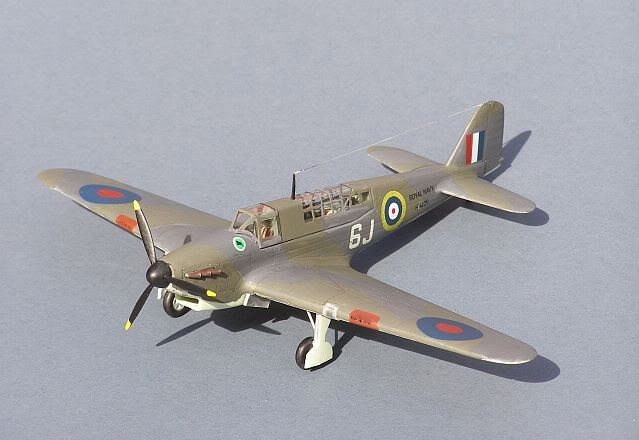
In both Vista and SMER releases the kit comes with the same well executed Propagteam decals/transfers, albeit with better colour density in the SMER kit. I would expect the Revell decals to be just as good and I believe they cover a different aircraft. I know that the Airfix ones (as originally released) are nice looking, and offer some different markings, but the ones I have seen have been translucent and fell to pieces when used (where have we heard that before?).
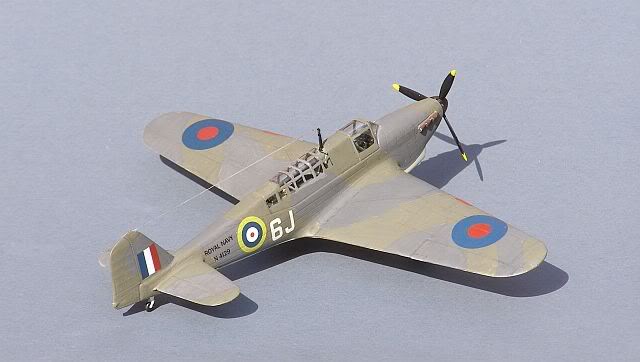
The kit is quite simple to build, with an entirely conventional breakdown of parts. The cockpit is pretty bare, with 2 simple seats, a (quite nice) instrument panel and pedals for the pilot; the compass bowl in the footwell is, I am assured, incorrect. Unfortunately, reference photos for the aft cockpit are hard to come by and because the only remaining Fulmar has largely been stripped of its wartime equipment, you won't see much under the framing. However, I added some simple scratch details to mine, based on the Firefly I at Yeovilton (the Fulmar's successor).
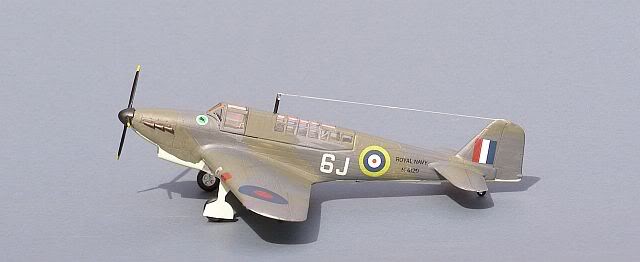
The only real build problem I had was with the fit of the upper wings - the port wing left a large gap and no amount of fettling could close it, so some filler was eventually required. One subtle problem, not easy to fix, is that the port and Stbd exhausts are in different positions; its only really noticeable from the head on position, so I left them as they were. The cooler scoop/bath is also rather bare (you can't actually see through it, but there are none of the complex shapes that should be there). The undercarriage wells have some basic spar and framing detail, but no side walls, which is a real shame, so I did some basic boxing in.
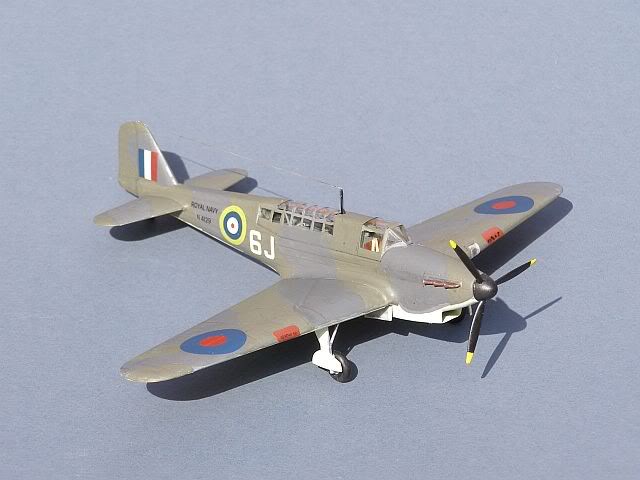
Vista give little detail on their full colour painting guide, but the more informative SMER boxing suggests that the markings are for an 803 Sqn aircraft, as flown by Lt Donald Gibson RN in 1941. Whilst on the face of it this looks credible, the aircraft serial number N4129 does not match with my references, which suggest his aircraft was N2006. The latter definitely crashed, so it is entirely possible that this was a replacement with the same 6J side code, but in this case it may not be Gibson's.
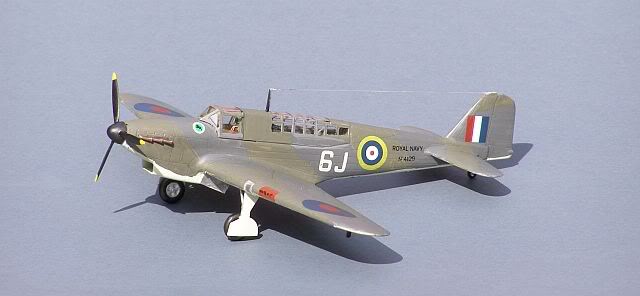
All in all, this is an inexpensive and acceptable, if simple kit, that is recommended for most levels of modeller, in any of the 4 boxings I am aware of, standfast the dodgy Airfix decals.
More details of the Fulmar and other Naval fighters on my RN Props pages
Vickers Challenger II - Royal Scots Dragoon Guards, Operation Telic, Iraq 2003
Trumpeter 1/72.
A quick break from aircraft. This is the second Trumpeter AFV that I have built and I continue to be impressed. Parts fit is excellent and well thought out whilst the finished model is very convincing. I understand from the purists that the turret is slightly squashed looking, whilst the rear decking doors are too short, but to be honest, I cant see anything wrong with it!
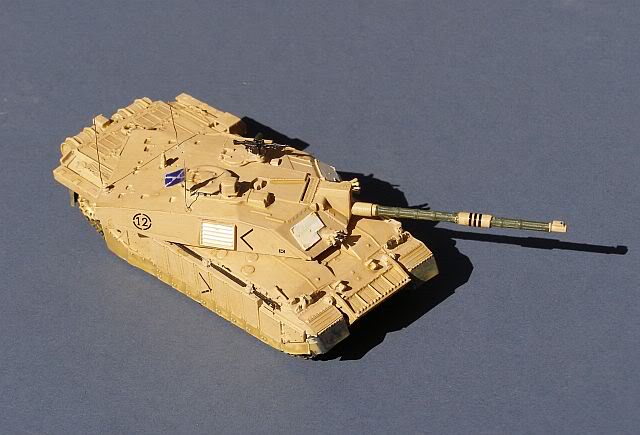
As always, Trumpeter provide a comprehensive decal sheet with a wide range of options, but once again, the instructions only show one of these options, leaving you to guess the rest! For the record, I believe they are the Queens Royal Lancers (the one illustrated in the instructions), No1 Royal Tank Regt and the Royal Scots Dragoon Guards. I was determined to do a Scots tank, with the Saltire on the turret side and Desert rat on the turret front, from the assault on Basra, where the Army's 7th Armoured Brigade provided heavy armour support to the Royal Marines of 3 Commando Brigade.
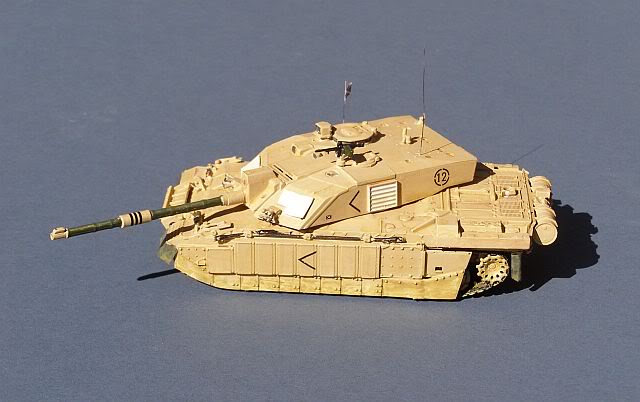
After peering at many photos on-line, I think I have got the decals correct. Unfortunately, Trumpeter have printed the Saltire in black, but at this scale its not too obvious.
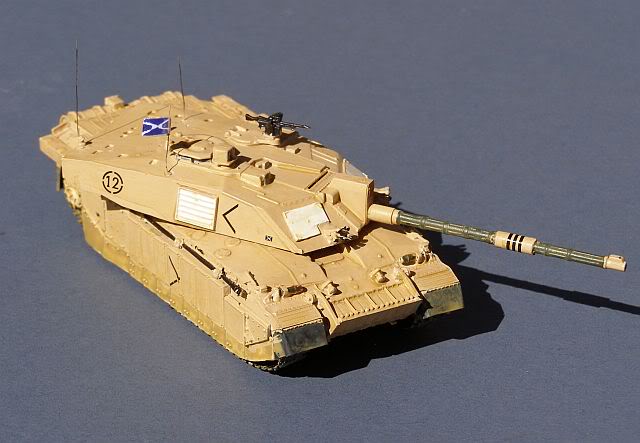
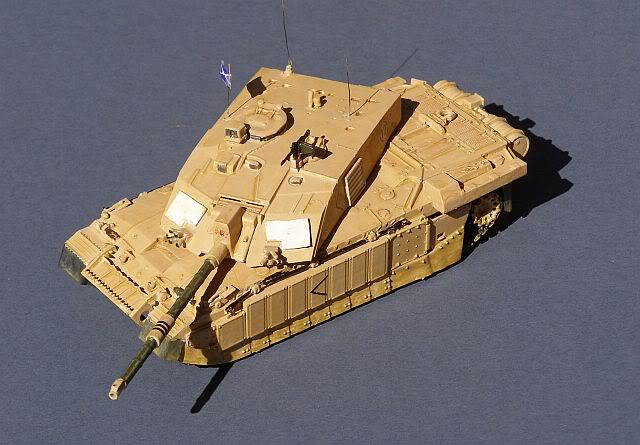
More Tanks & AFVs on my "Dark Side" pages
Hawker Hurricane 1 (Trop), 806 Sqn FAA / RN Fighter Squadron, 269 Wing, Desert Air Force, December 1941.
Airfix 1/72, with added Tropical Filter.
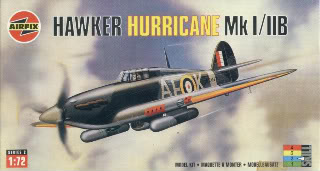
Airfix have two 1/72 Hurricane kits in their catalogue, a simple Mk I (also issued by Heller) and a Mk I/IIb. Bizarrely, the more expensive Series 2 Mk I/IIb version is much the poorer of the two, although it does include a plethora of extra parts (rocket rails, anti-tank cannon, fuel tanks and bombs) that are quite useful.
Unfortunately, it has some real issues, partly because Airfix tried to build a range of Marks from the one mould (it has also been sold as a MkIVRP) and ended up with a bit of a mongrel, neither one nor the other. It also has some very heavy rivet detail on wings and forward fuselage, plus a strangely squashed and small canopy. Strangely, the shorter spinner (for its Mk I guise) is far too wide for the fuselage and the longer one is too long.
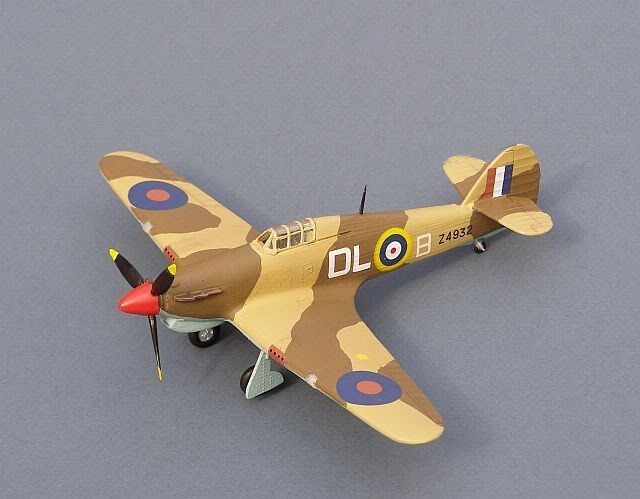
So, having bought it to make a Sea Hurricane I was quite disappointed, but decided instead to build it as one of the desert based RN flown but RAF owned tropical Hurricanes, specifically, the mount of Fleet Air Arm pilot, Sub Lt Mike Fell (later Admiral Fell), based at Maddelena in Libya.
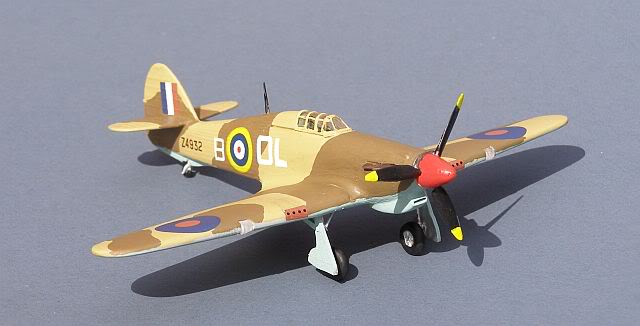
As these hard-worked aircraft were often a mix of equipment, I have gone with the strange pointed spinner! As with many Hurricane kits, you can see through the undercarriage wells, so I did a bit of basic boxing in.
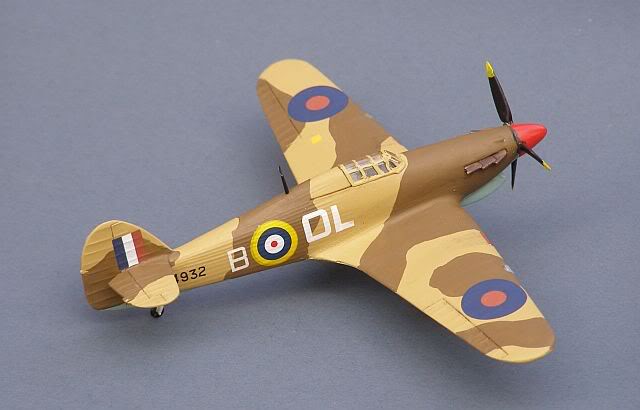
I really can't recommend this kit; yes it looks like a Hurricane, sort of, but for the price, there are many much better representations out there, including Airfix's own Mk I Series 1 kit !
More details of the Hurricane and other Naval fighters on my RN Props pages
www.gengriz.co.uk